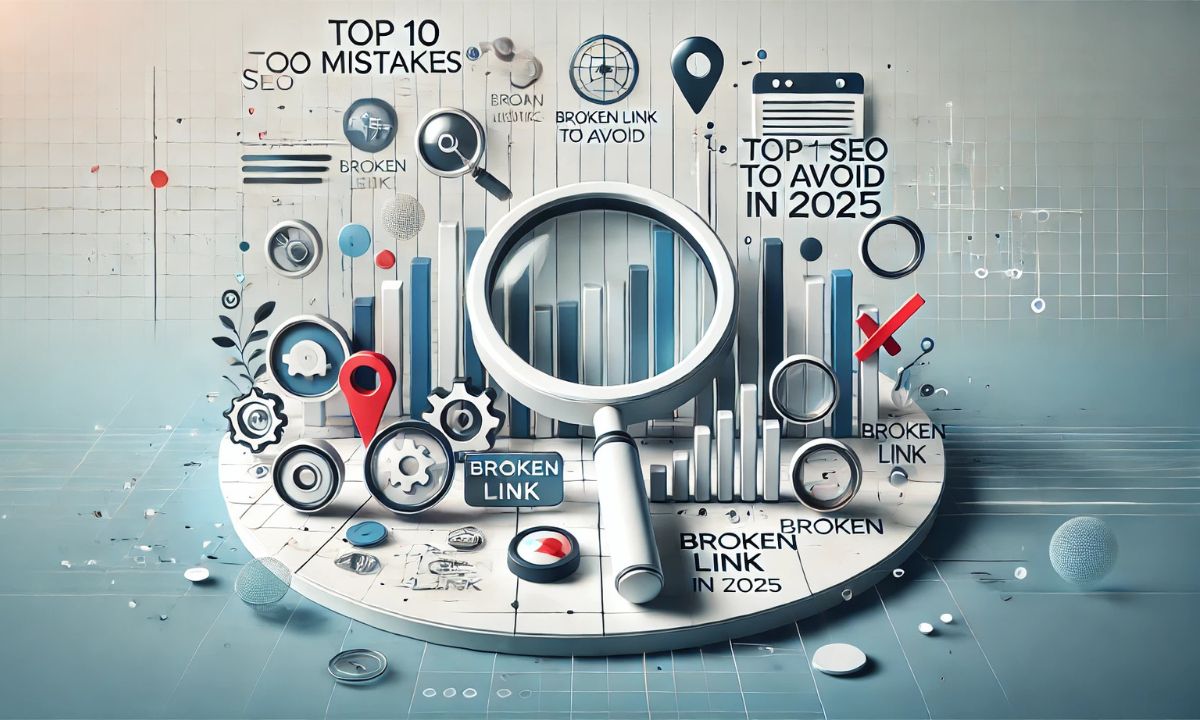SEO in 2025 is vital to grow in this digital world, and making strategies is way more difficult. Even some experienced practitioners can fall into common traps. These mistakes seem to be very small but can highly impact our website’s performance and ranking. In this blog, we will cover the Top 10 SEO Mistakes to avoid in 2025.
Pro tip: SEO is not just about knowing what to do, It is also about what not to do.
How to stay updated on SEO Trends?
To stay up in the trend, we must keep up with Google updates. For instance, Google’s Helpful Content Update emphasizes user-first content, making it vital to prioritize quality over keyword stuffing. So, Here are the Top 10 Common SEO mistakes that you might be doing wrong.
- Ignoring Keyword Research

Keyword research is the first part of any strategy, it is like the backbone of SEO strategy. Many websites fail because either they don’t know what are they targeting or they are running for the wrong keywords and target audience.
Why It’s a Mistake: Without proper keyword targeting, you won’t reach the right audience.
How to Avoid:
- Use tools like Google keyword planners, Ahref, or SEMrush to find relevant and low-competition keywords.
- Also, check for keywords difficulty before adding them to your list.
- Focus on a mix of primary and secondary keywords.
- Stay updated with any google’s updates on keywords to ensure that our strategy is aligned with the current search trends.
- Keep in mind the most important Search Intent of the user.
Here is Ahrefs Keyword Research Guide
- Keyword Stuffing
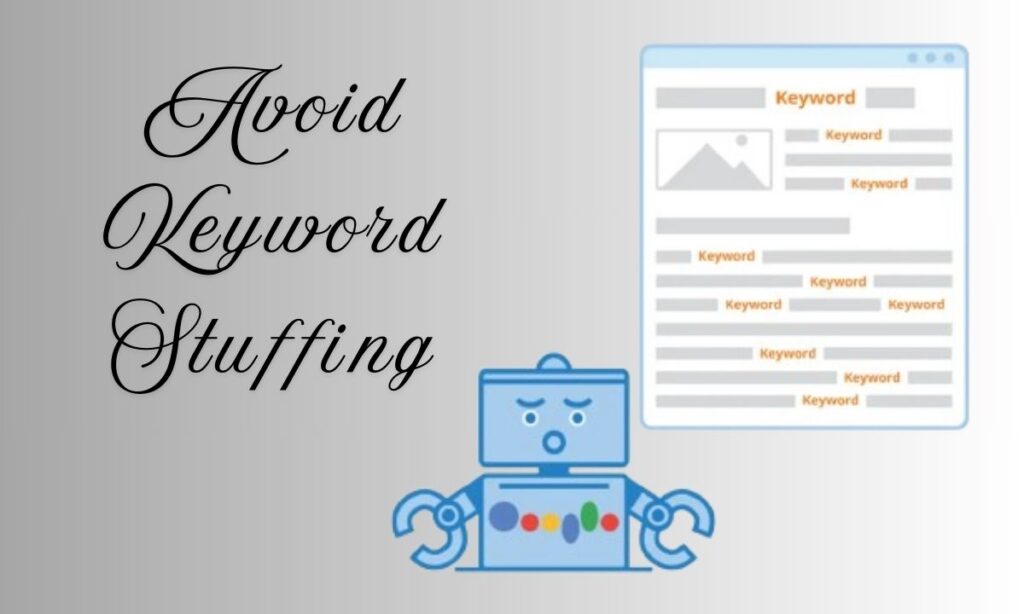
In earlier days, SEO was easy and simple, one of the methods was to use keywords vigorously to indicate crawler what the content was about. But now, in SEO 2O25 it’s a surefire way to get penalized by search engines.
Why It’s a Mistake: Keyword stuffing leads to poor user experience and can trigger penalties from search engines.
How to Avoid:
- It is important to maintain a natural keyword density of 1-2%.
- We must focus on user intent and readability rather than repeating keywords excessively.
- Refer to Google’s Spam Policies to avoid practices that can harm your site.
Here are Google’s guidelines for Spam Policies
- Neglecting Technical SEO
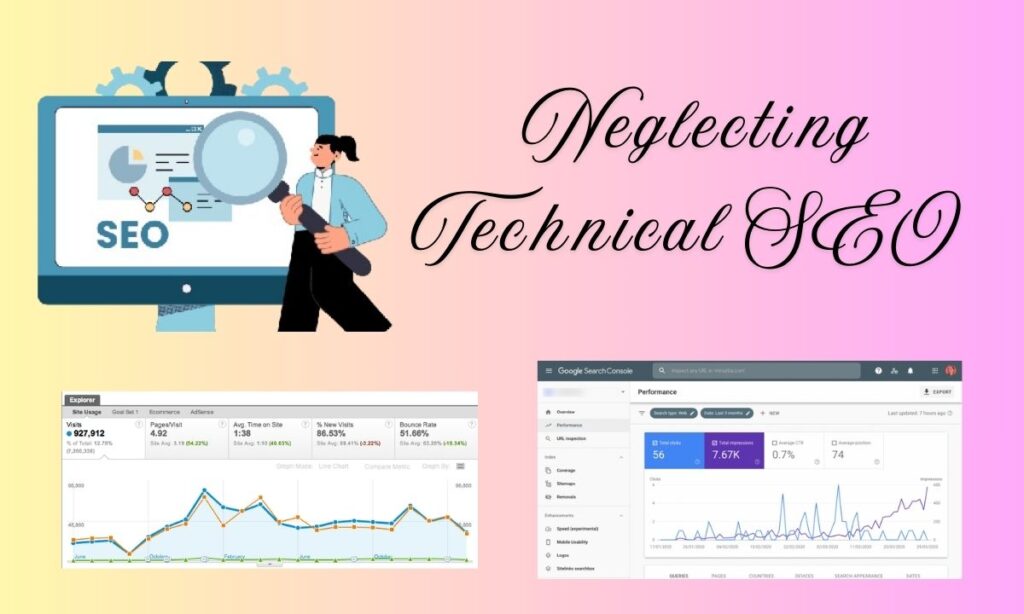
Technical Issues like broken links, slow page loading speed, and poor mobile optimization can harm your ranking significantly. Also, these issues can also spoil the user experience.
Why It’s a Mistake: Search engines prioritize websites that offer a seamless user experience.
How to Avoid:
- You should regularly audit your website using tools like Screaming Frog or SEMrush.
- You must ensure your site is mobile-friendly and loads quickly.
- You must fix broken links and optimize your site architecture.
- Stay updated about Google’s Core Web Vitals updates, which directly affect rankings.
- Skipping Meta Tags Optimization
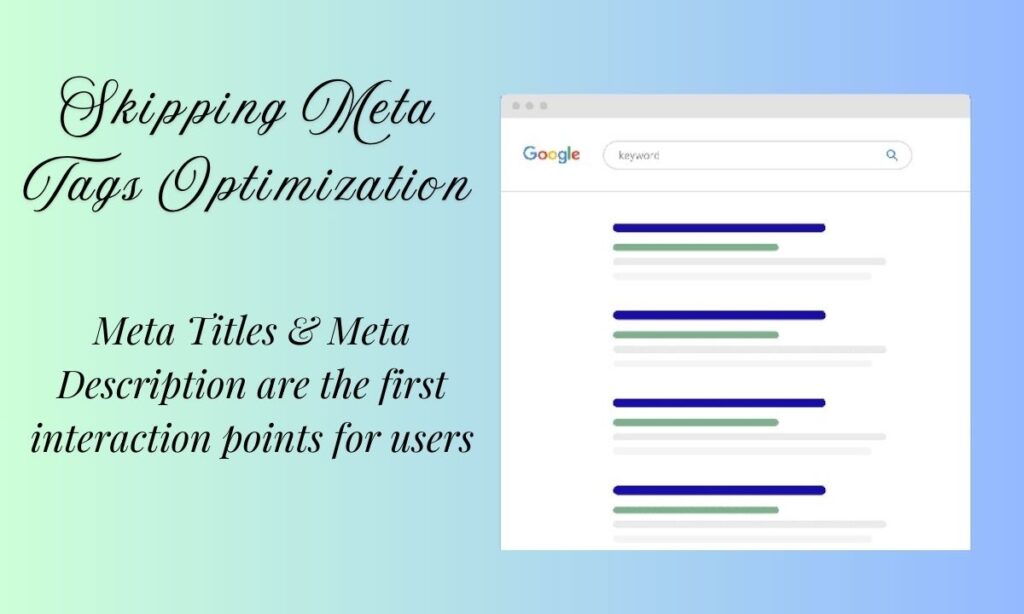
Meta Titles and Description are the first interaction points for users, it is crucial to optimize them as they help enhance user experience and also drive traffic to your website. Meta Tags are essential for both search engines and users. Many sites either skip them or use duplicate content for multiple pages.
Why It’s a Mistake: Properly optimized meta tags improve click-through rates (CTR) and help search engines understand your content.
How to Avoid:
- We should write unique meta titles and descriptions for each page.
- Keep titles within 55-60 characters and descriptions within 155-160 characters.
- Use compelling language to encourage clicks and drive traffic.
Here is Moz’s Meta Tag Guide
- Poor Content Quality
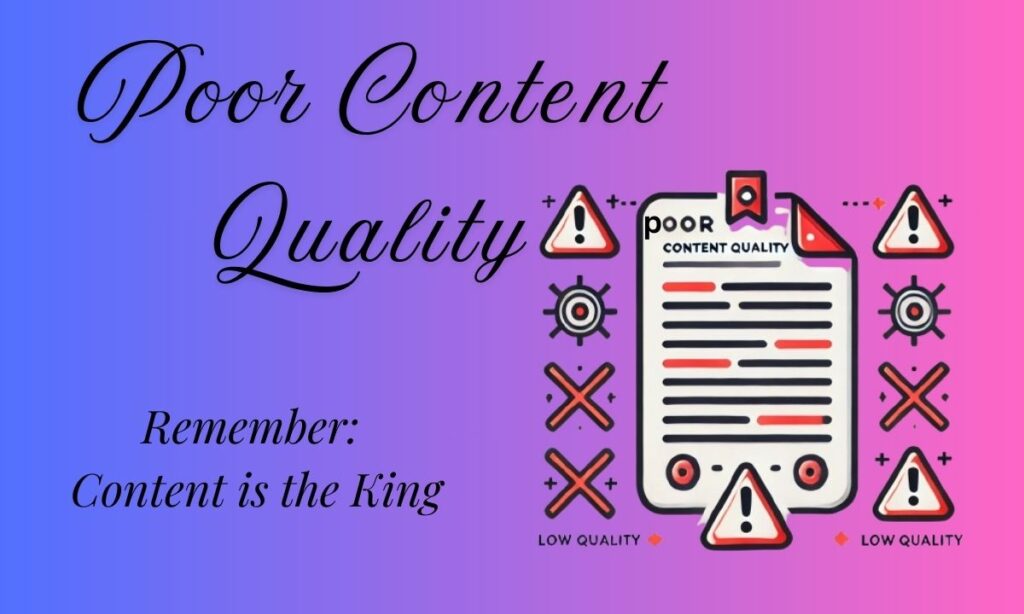
Publishing Thin, Low-quality content can harm your website’s credibility and ranking. Poor content can also lead to poor user experience and increased bounceback rates.
Why It’s a Mistake: Google prioritizes content that demonstrates expertise, authoritativeness, and trustworthiness (E-A-T).
How to Avoid:
- You should focus on creating in-depth, well-researched content which enhances user experience.
- You must include outbound links to reputable sources, such as Search Engine Journal and Google’s SEO Guidelines.
- Ensure your content answers user queries comprehensively.
- Keep up with Google’s Helpful Content Update, which rewards user-focused content.
- Ignoring Internal Linking
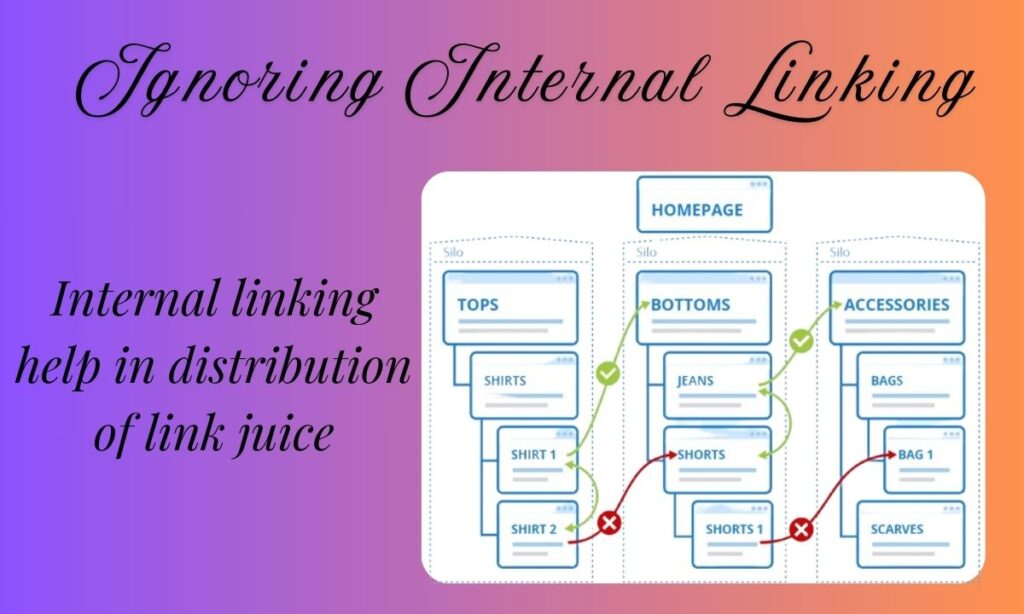
Internal links can help users easily navigate your site and also help the crawler to understand the site’s structure better. Internal linking can also help in distributing Domain authority and other link juices to other website pages.
Why It’s a Mistake: Without internal links, your site may suffer from poor crawlability and user engagement.
How to Avoid:
- Include 3-5 internal links per blog post.
- Link to relevant pages using descriptive anchor text.
- Not Building Quality Backlinks
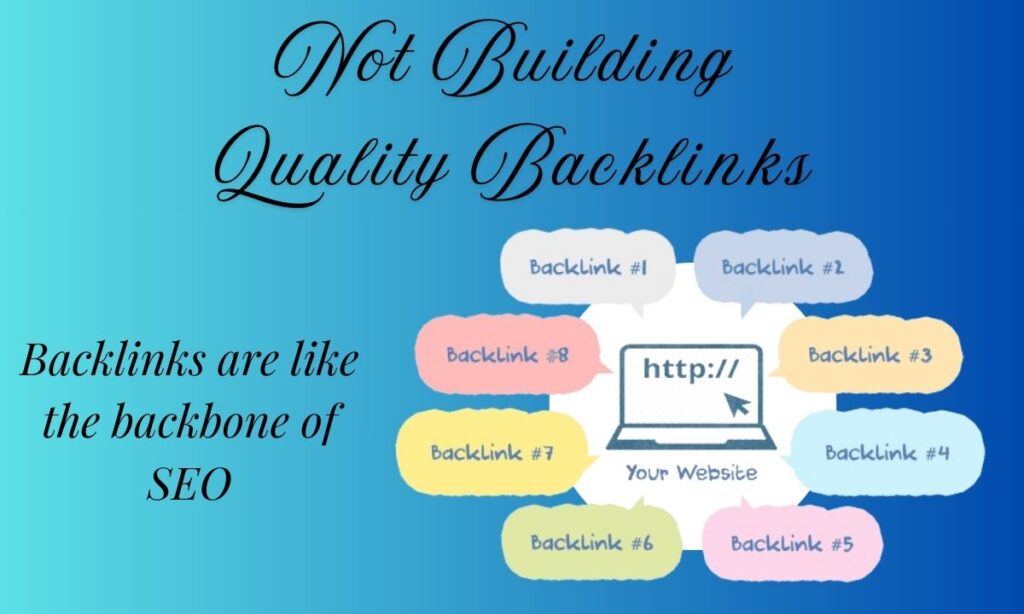
Backlinks are like the backbone of SEO, and as the strength of a body lies in the strength of the backbone, similarly, the Strength of the Websites lies in the quality of the backlink. They act as a “Vote of Confidence” which indicates how worthy and valuable your content is.
Why It’s a Mistake: Without high-quality backlinks, it’s challenging to improve your domain authority.
How to Avoid:
- Focus on earning backlinks from reputable websites through guest posting and content marketing.
- Use tools like Moz or Ahrefs to monitor your backlink profile.
- Ensure your backlink strategy aligns with Google’s Link Spam Update guidelines.
Here is Google’s Link Schemes Guidelines
- Overlooking Mobile Optimization
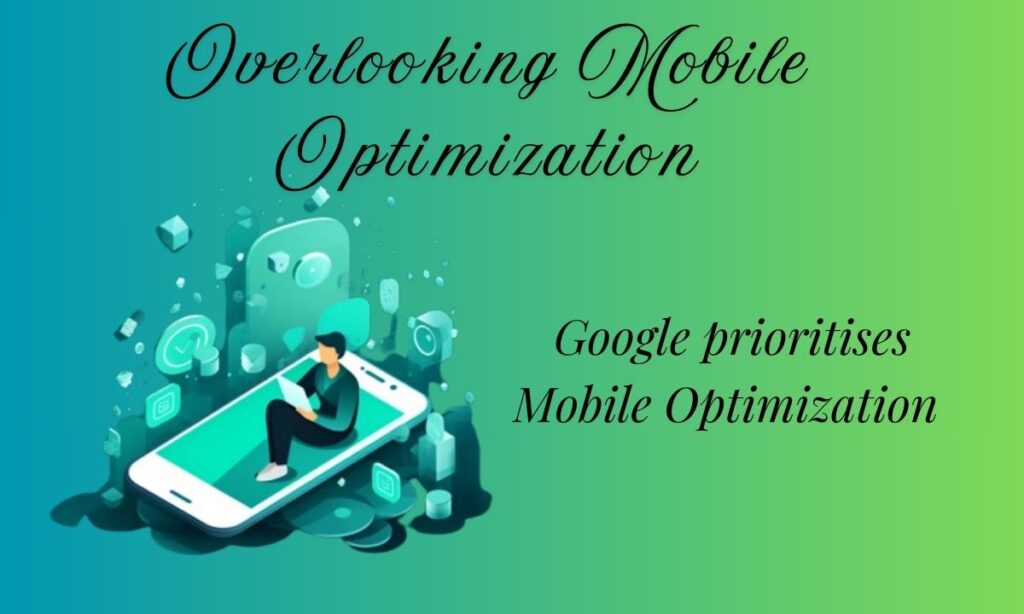
Google reports that about 95% of its traffic comes from mobile devices, making mobile-friendly websites a clear priority. Optimizing for mobile ensures your site looks great and functions seamlessly across all devices, with responsive design and simplified navigation enhancing the user experience.
Why It’s a Mistake: Google uses mobile-first indexing, meaning it primarily evaluates the mobile version of your site.
How to Avoid:
- You must use responsive design to ensure your site looks great on all devices.
- You must Test your site’s mobile-friendliness using Google’s Mobile-Friendly Test.
- Neglecting Analytics, console, and Monitoring
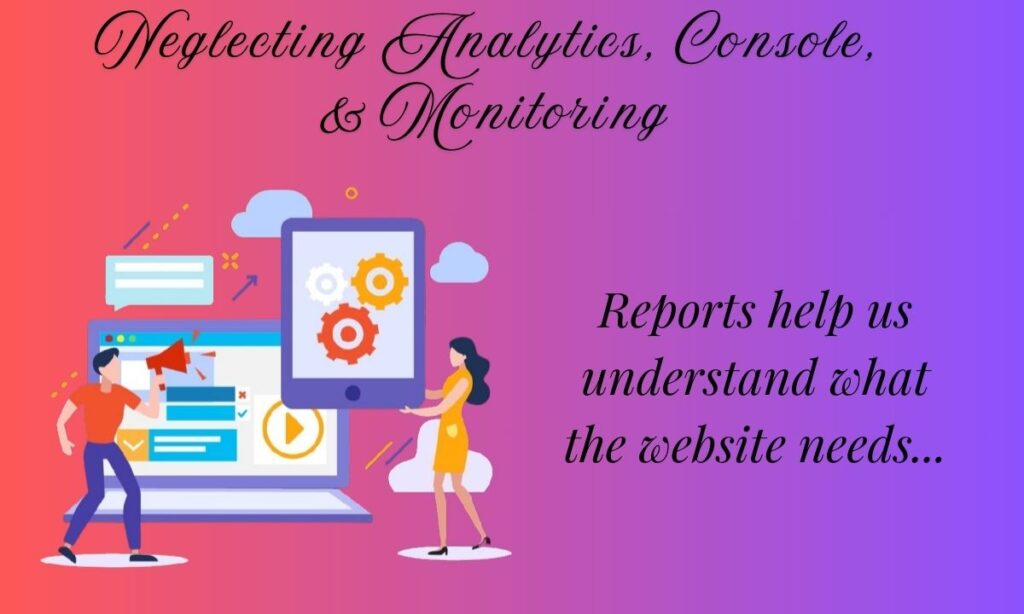
Google Analytics and Google Search Console are tools that provide you with reports and analysis of any issue, error, or information like organic, paid traffic, and other factors. So it is crucial to track performance to adapt to any change in strategy.
Why It’s a Mistake: Without data, you can’t identify what’s working and what needs improvement.
How to Avoid:
- Set up Google Analytics and Google Search Console.
- Regularly review key metrics such as organic traffic, bounce rate, and conversions.
- Stay updated on Google’s Search Console Insights feature to gain better content performance insights.
- Failing to Update Old Content
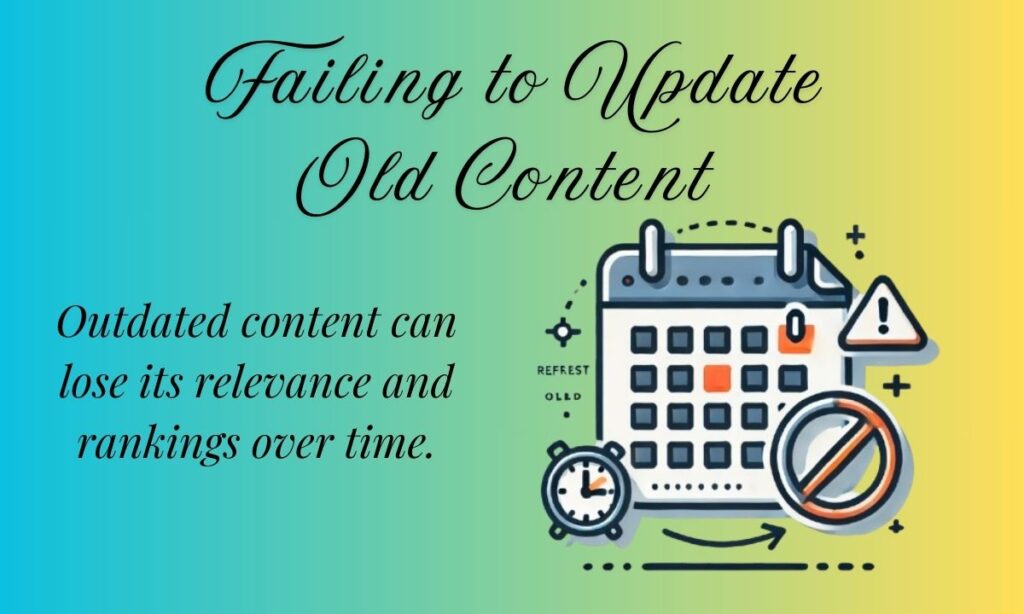
SEO is not like a time effort, it requires daily efforts whether it is quality backlinking or updating content. Content that performed well a year ago, may not rank today because of low accuracy and outdated content.
Why It’s a Mistake: Outdated content can lose its relevance and rankings over time.
How to Avoid:
- Regularly refresh old blog posts with updated information.
- Add new internal and external links as needed.
- Follow Google’s Freshness Algorithm Update guidelines to keep your content relevant.
SEO Statistics That Matter
Staying updated with key SEO statistics is essential for building an effective strategy. Here’s a table highlighting important data on keyword research, technical SEO, content, backlinks, and more.
Here’s a table with relevant SEO statistics that you can insert into your blog:
| SEO Factor | Statistic | Source |
|---|---|---|
| Keyword Research | 68% of all online experiences start with a search engine. | BrightEdge |
| Keyword Targeting | 91% of web pages get zero traffic from Google due to poor keyword targeting. | Ahrefs |
| Page Loading Speed | A 1-second delay in page load time can reduce conversions by 7%. | Akamai |
| Mobile Friendliness | 60% of all organic search visits come from mobile devices. | Statista |
| Content regular Update | Websites with regularly updated content generate 55% more traffic. | HubSpot |
| High Quality Content | High-quality content is 3x more likely to drive organic traffic than low-quality content. | Content Marketing Institute |
| Backlinks | Pages with more backlinks rank 3.8x higher in search results. | Backlinko, Ahrefs |
| Meta Tags Optimization | Optimized meta descriptions increase click-through rates by up to 30%. | Moz |
| Mobile Optimization | 95% of Google traffic comes from mobile devices. | |
| Analytics & Monitoring | Companies using analytics tools are 2.8x more likely to succeed in digital marketing. | McKinsey |
Conclusion
Avoiding common SEO mistakes is crucial for maintaining and improving our website’s ranking. By focusing on proper keyword research, high-quality content, technical SEO, and continuous monitoring, you can stay ahead of the competition. In upcoming blogs, we will discuss how to boost traffic with effective strategies and how to win over 3 ways to win over AI in SEO. Together, we’ll unlock the full potential of our website’s performance, Stay tuned with AcquireSavvy!
Remember, SEO is a long-term strategy, and consistent efforts are required for the best results.

